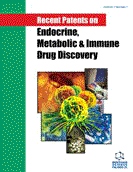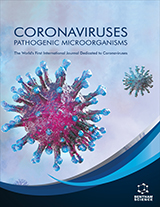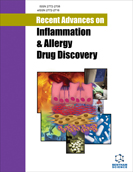Abstract
An enzymatic posttranslational modification of proteins at serine or threonine residue by β-N-acetyl glucosamine (GlcNAcylation, also known as O-GlcNAc modification), a product of hexosamine biosynthetic pathway (HBP), has been emerging as a fundamental regulatory mechanism like protein phosphorylation. A significant surge in the information in recent years due to technological advancement has implicated an important role for GlcNAcylation in a wide variety of cellular processes including cell division, metabolism, signal transduction and transcription. Furthermore, GlcNAcylation in proteins has been found to be intimately associated with phosphorylation which is one of the most diverse regulatory mechanisms in the biological system. Therefore, it is likely that altered protein GlcNAcylation may underlie etiology of various diseases including type 2 diabetes. Emerging evidence strongly indicates a role for GlcNAcylation in the development of insulin resistance, a hallmark of type 2 diabetes. Recent findings on protein GlcNAcylation, especially in relation to insulin signaling and insulin resistance have regenerated an immense interest in this field; which was first reported in early nineties. Here we summarize recent development in this area along with unanswered questions and future direction at the end. Some of the recently patented technologies in relation to GlcNAcylation are also summarized in this review. Further investigations in this area are timely and of critical importance with continuous increase in the incidence of type 2 diabetes and diabetes associated complications worldwide. A better understanding of the underlying mechanisms may provide new opportunities for the prevention and treatment of type 2 diabetes.
Keywords: Glucose, GlcNAc, GlcNAc transferase, GlcNAc amidase, GlcNAcylation, glycation, hexosamine biosynthetic pathway, insulin resistance, insulin signaling, phosphorylation, posttranslational modification, protein-protein interaction, type 2 diabetes, tyrosine phosphorylation
Recent Patents on Endocrine, Metabolic & Immune Drug Discovery (Discontinued)
Title: Protein Modification by β-N-Acetyl Glucosamine (O-GlcNAc) in Insulin Signaling and Insulin Resistance
Volume: 4 Issue: 2
Author(s): Sudharsana R. Ande and Suresh Mishra
Affiliation:
Keywords: Glucose, GlcNAc, GlcNAc transferase, GlcNAc amidase, GlcNAcylation, glycation, hexosamine biosynthetic pathway, insulin resistance, insulin signaling, phosphorylation, posttranslational modification, protein-protein interaction, type 2 diabetes, tyrosine phosphorylation
Abstract: An enzymatic posttranslational modification of proteins at serine or threonine residue by β-N-acetyl glucosamine (GlcNAcylation, also known as O-GlcNAc modification), a product of hexosamine biosynthetic pathway (HBP), has been emerging as a fundamental regulatory mechanism like protein phosphorylation. A significant surge in the information in recent years due to technological advancement has implicated an important role for GlcNAcylation in a wide variety of cellular processes including cell division, metabolism, signal transduction and transcription. Furthermore, GlcNAcylation in proteins has been found to be intimately associated with phosphorylation which is one of the most diverse regulatory mechanisms in the biological system. Therefore, it is likely that altered protein GlcNAcylation may underlie etiology of various diseases including type 2 diabetes. Emerging evidence strongly indicates a role for GlcNAcylation in the development of insulin resistance, a hallmark of type 2 diabetes. Recent findings on protein GlcNAcylation, especially in relation to insulin signaling and insulin resistance have regenerated an immense interest in this field; which was first reported in early nineties. Here we summarize recent development in this area along with unanswered questions and future direction at the end. Some of the recently patented technologies in relation to GlcNAcylation are also summarized in this review. Further investigations in this area are timely and of critical importance with continuous increase in the incidence of type 2 diabetes and diabetes associated complications worldwide. A better understanding of the underlying mechanisms may provide new opportunities for the prevention and treatment of type 2 diabetes.
Export Options
About this article
Cite this article as:
R. Ande Sudharsana and Mishra Suresh, Protein Modification by β-N-Acetyl Glucosamine (O-GlcNAc) in Insulin Signaling and Insulin Resistance, Recent Patents on Endocrine, Metabolic & Immune Drug Discovery (Discontinued) 2010; 4 (2) . https://dx.doi.org/10.2174/187221410791196597
| DOI https://dx.doi.org/10.2174/187221410791196597 |
Print ISSN 1872-2148 |
| Publisher Name Bentham Science Publisher |
Online ISSN 2212-3334 |
 7
7Related Articles
-
Inhibitory Activity of Curcumin Derivatives Towards Metal-Free and Metal-Induced Amyloid-β Aggregation
Current Alzheimer Research Phospholipase A2 Isoforms as Novel Targets for Prevention and Treatment of Inflammatory and Oncologic Diseases
Current Drug Targets An Update on Adenosine A2A-Dopamine D2 Receptor Interactions: Implications for the Function of G Protein-Coupled Receptors
Current Pharmaceutical Design CCR5 as a Potential Target in Cancer Therapy: Inhibition or Stimulation?
Anti-Cancer Agents in Medicinal Chemistry Role of Autophagy in Alzheimer’s Disease
Current Enzyme Inhibition Targeting the Akt Kinase to Modulate Survival, Invasiveness and Drug Resistance of Cancer Cells
Current Medicinal Chemistry From Bitopic Inhibitors to Multitarget Drugs for the Future Treatment of Alzheimer’s Disease
Current Medicinal Chemistry Receptor Dimerization - Rationale for the Design of Bivalent Ligands
Current Topics in Medicinal Chemistry Sphingosine Kinases Signalling in Carcinogenesis
Mini-Reviews in Medicinal Chemistry Approaches to Target Profiling of Natural Products
Current Medicinal Chemistry Subject Index to Volume 10
Current Pharmaceutical Design Impact of Cytokines and Chemokines on Alzheimer’s Disease Neuropathological Hallmarks
Current Alzheimer Research Heterocyclic Curcumin Derivatives of Pharmacological Interest: Recent Progress
Current Topics in Medicinal Chemistry The Identification and Characterization of Excitotoxic Nerve-endings in Alzheimer Disease
Current Alzheimer Research AChE Inhibition-based Multi-target-directed Ligands, a Novel Pharmacological Approach for the Symptomatic and Disease-modifying Therapy of Alzheimer’s Disease
Current Neuropharmacology Natural Coumarins as a Novel Class of Neuroprotective Agents
Mini-Reviews in Medicinal Chemistry NPY and NPY Receptors in Vascular Remodeling
Current Topics in Medicinal Chemistry The Role of ABC and SLC Transporters in the Pharmacokinetics of Dietary and Herbal Phytochemicals and their Interactions with Xenobiotics
Current Drug Metabolism Bergamot Juice Extract Inhibits Proliferation by Inducing Apoptosis in Human Colon Cancer Cells
Anti-Cancer Agents in Medicinal Chemistry Confomational Analysis of Soluble Oligomers of GFP Tagged Prion Protein By Fluorescence Fluctuation Spectroscopy
Current Pharmaceutical Biotechnology






















